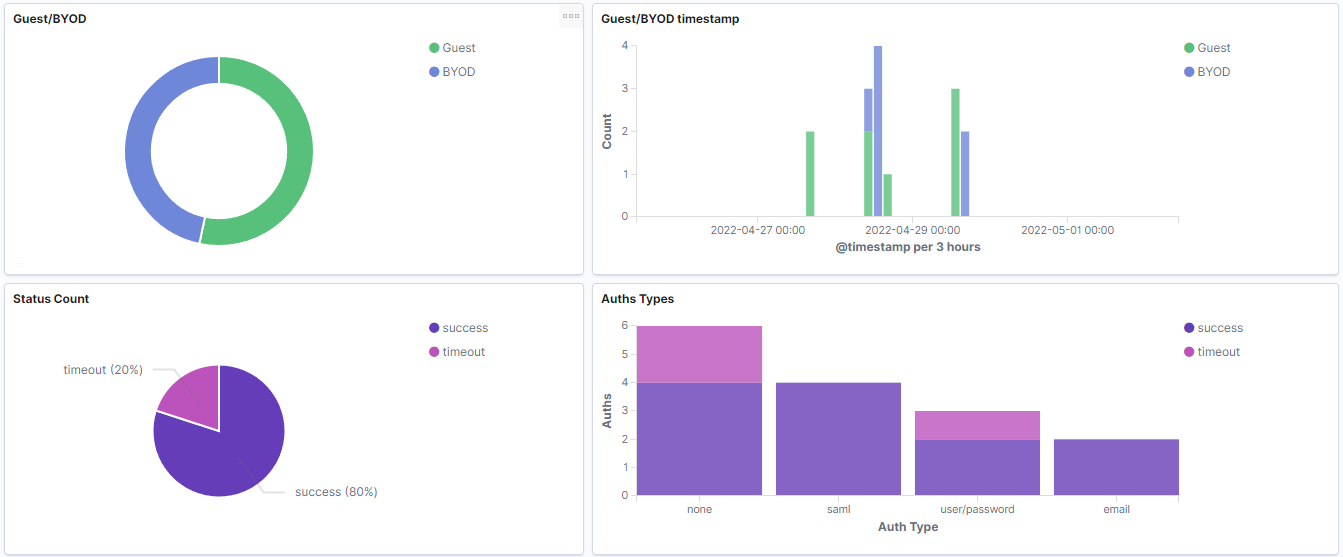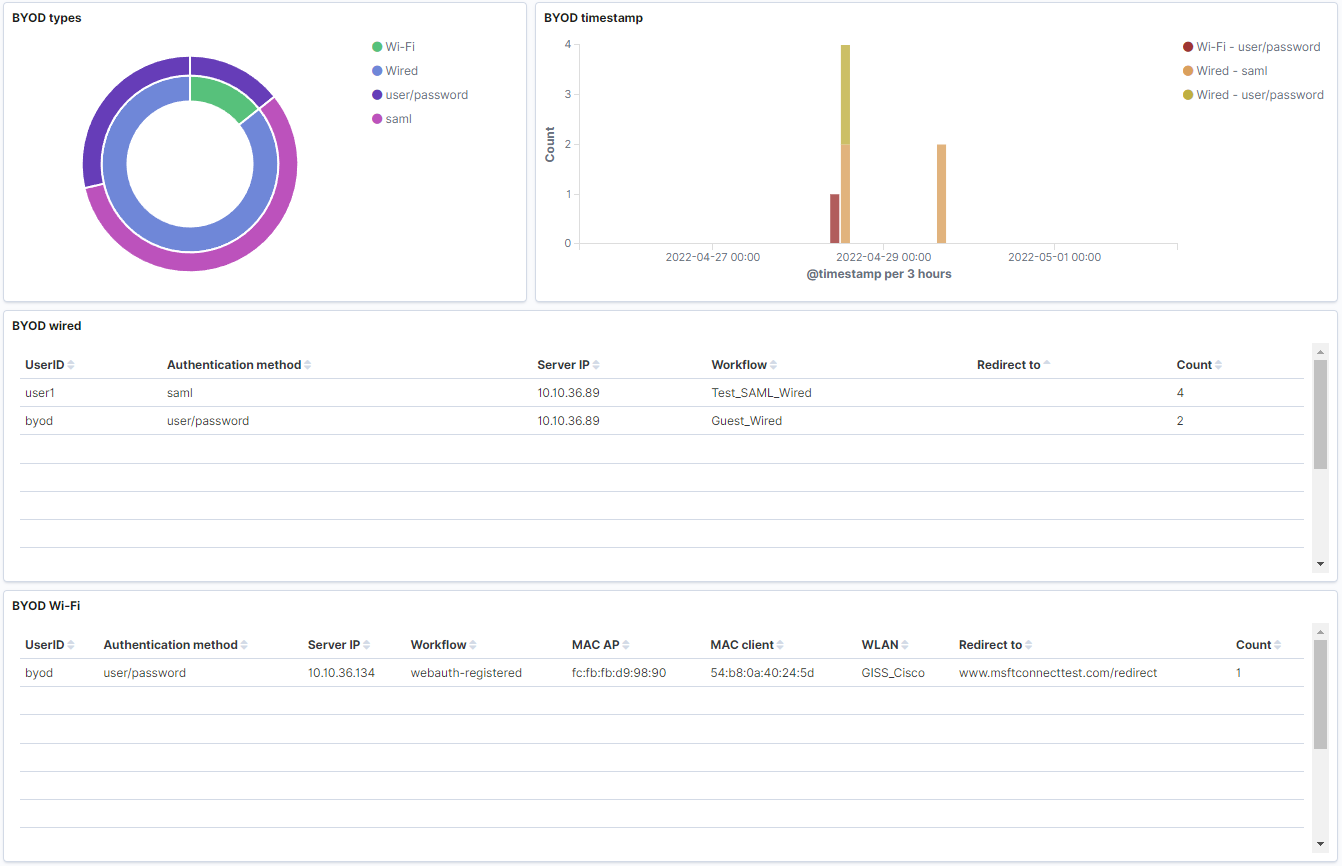4.5.7. Monitoring
We can monitor the BYOD use case with the following dashboard located in Analytics -> Use Cases -> Guest/BYOD
The Guest/BYOD dashboard displays all the ON Captive events. They are divided into Guest and BYOD use cases:

ON Captive Menu: Shows the different windows of the dashboard and allows switching between them. The windows are General, Guest and Network Byod.
4.5.7.1. General
The General window displays global visualizations of Guest and BYOD events.

Guest/BYOD: Represents the percentage of Guest and BYOD events.
Guest/BYOD timestamp: Shows the ON Captive events, separated by Guest and BYOD types on a timeline.
Status Count: Represents the percentage of the events status.
Auths Types: Shows the different authentication types with the count of events for each separated by the event status.

Location count: Shows the different devices locations with the count of events for each separated by the authentication type and event status.
Connections: Shows a table with the Guest and BYOD connections. In this table the timestamp is represented, as well as the user ID, the authentication type, the status, the location, the MAC, and the amount of times this event is repeated.
4.5.7.2. BYOD
The BYOD window displays BYOD views.

BYOD types: In the internal pie, we can see the percentage of BYOD event types that can be wired and Wi-Fi, and in the external pie, we can see the authentication type used that can be user and password or SAML.
BYOD timestamp: Shows the BYOD events, separated by BYOD type and authentication type on a timeline.
BYOD wired: Shows a table with the BYOD wired events. This table represents the user ID, as well as the authentication method, the server IP, the workflow name, the page to redirect the device and the count this event has been repeated.
BYOD Wi-Fi: Shows a table with the BYOD Wi-Fi events. This table represents the user ID, as well as the authentication method, the server IP, the workflow name, the MAC of the access point, the MAC client, the WLAN, the page to redirect the device and how many times this event is repeated.